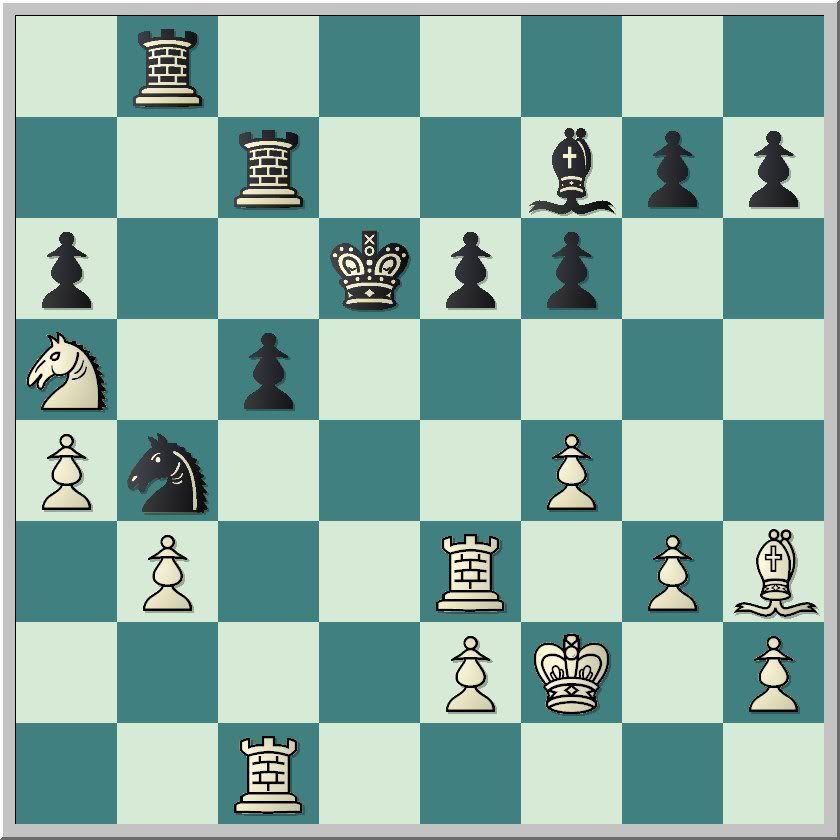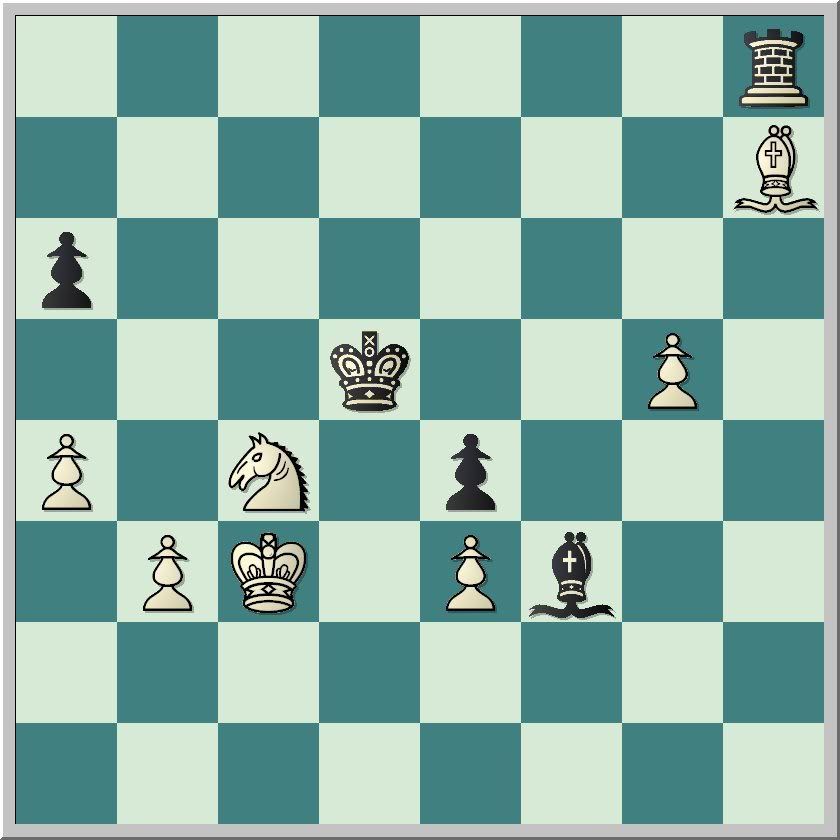Television was made for American football. The game's frequent breaks in the action is perfect for Ford and Budweiser commercials, and TV cameras give the best view of the action.
The internet was made for chess. The official Corus Chess 2009 site incorporates a Java viewer for following the games live. The games are also broadcast through the Playchess server and many other chess playing sites.
I only need decide which game or games to follow. There are three grandmaster groups with fourteen players each. That's twenty-one games between players who are mostly among the top one hundred in the world. In the Corus A Group, half of the world's top ten are competing. Today the top two seeds are playing each other: Vassily Ivanchuk (number 3 on the FIDE rating list) and Magnus Carlsen (number 4).
Certainly their game, a closed Spanish, bears watching. But what else?
Jan Smeets opted for the Russian Defense (aka Petroff) against Michael Adams. In the B Group, Nigel Short is facing Krishnan Sasikiran's Sicilian. Italian Fabiano Caruana is also playing a Sicilian against Ukranian Zahar Efimenko in the B group. Back in the A group, the queens came off early in Sergei Movsesian's Slav Defense against Levon Aronian. The American Gata Kamsky, a former Soviet junior champion that moved to the United States in 1989, is playing White against Wang Yue's Russian Defense. Teymour Radjabov opted for the King's Indian Defense against Loek van Wely. More Sicilians are being played in Sergei Karjakin - Daniel Stellwagen and Leinier Dominguez - Alexander Morozevich in A, and in Alexander Motylev - Francisco Vallejo Pons in the B Group.
It's a day for king's pawn openings.
While I try to watch more than I can process, Ivanchuk - Carlsen ends in a draw.
Final position; White to move

The Decision
I've selected two games to follow more closely.
Kamsky - Wang Yue [C42]
Corus Chess (5), Wijk aan Zee 2009
1.e4 e5 2.Nf3 Nf6 3.Nxe5 d6 4.Nc4 Nxe4 5.d4 d5 6.Ne3 Nc6 7.c3 Nf6 8.Bd3 Bd6 9.Nf5 0–0 10.0–0 Ne7 11.Nxd6 Qxd6 12.Qc2 Re8 13.Na3 c6 14.Bg5 Ng6 15.Rfe1 Bd7 16.f3 Nh5 17.Bxg6 hxg6 18.Qd2 Nf6 19.Bf4 Qf8 20.Be5

20...Nh7 21.Nc2 f6 22.Bg3 Qf7 23.Nb4 g5 24.a4 Bf5 1/2-1/2
Aronian - Movsesian [D15]
Corus Chess (5), Wijk aan Zee 2009
1.d4 d5 2.c4 c6 3.Nf3 Nf6 4.Nc3 a6 5.a4 e6 6.g3 dxc4 7.Bg2 c5 8.dxc5 Qxd1+ 9.Nxd1 Nc6 10.Ne3 Bxc5 11.Nxc4 Ke7 12.0–0 Nd5 13.Rd1 f6 14.Nfd2 Rd8 15.Nb3 Ba7 16.Nca5 Rb8 17.Nxc6+ bxc6 18.Na5 Bd7 19.b3 Bc5 20.Bd2 Bb4 21.Rac1

21...Rdc8 22.Bxb4+ Nxb4 23.f4
Hiarcs 12 sees an advantage of nearly one pawn for Aronian. White's bishop has a bit more scope, his king appears further from danger, and Black has two isolated pawns. But the backwards b-pawn gives Black some play, too.
23...c5 24.Kf2 Rc7 25.Rc3

Okay, White can double rooks on the c-file to put some pressure on the isolated pawn. When Black also doubles his rooks in defense, the White knight might move a5-c4-b6. Is that enough for advantage? Does White have a better plan?
25...Be8
White will not get a bishop against a knight, which was part of my fantasy scenario.
26.Rdc1 Kd6
The king is a fighting piece. At least he can take care of himself, and a vulnerable farmer. I think that Hiarcs 12 is too optimistic for White. The advantage has dropped from 0.86 to 0.63 according to the silicon beast, but I think Movsesian is secure and the game may be drawn soon.
27.Re3 Bf7 28.Bh3
Perhaps the Black king will get overworked defending peons.
Black to move

Sometimes the live feed creates gaps in coverage, although these are less frequent than they were a few years ago. This game stalled for a bit, and now Playchess has it up-to-date again.
28...Ke7 29.Re4 g6 30.Rec4 Kd6 31.Bg2 Nd5 32.h4 Nb4 33.g4
It does appear that Aronian is finding the way towards progress. The White pieces have more mobility and play is taking place all over the board as pawns move forward. Will it be enough for victory?
33...h6 34.g5 hxg5 35.hxg5 fxg5 36.fxg5 Nd5 37.Rh1 Rb4
White to move

Clocks are nearing zero.
38.Rh8 Ke7 39.Be4 e5 40.Rh7 Kd6
The players have made the time control and get another hour on the clocks. Aronian appears to have a substantial positional advantage due to weaknesses in Black's pawn structure and more mobile White pieces. He must build the pressure until Movsesian realizes there is no point in continuing.
Black is almost in zugzwang.
41.e3
Increasing the mobility of the bishop.
41...Ke6
Black can shuffle the king back and forth while White seeks new targets. White has a decisive advantage.
42.Bd3 Rb8 43.Rc1
Black to move

The bishop's targets: a6 and d5.
43...Be8 44.Rch1 Rxh7 45.Rxh7 Nb4
Does Black have a fortress?
46.Be4 Rd8
White to move

47.Nc4
Improve your weakest piece.
47...Bc6
Movsesian wants to trade minor pieces perhaps, because, "In rook endings the weaker side generally has some chances of a draw right up to the very end" (Tarrasch). See "Okay, Not So Easy."
48.Bxg6 Rf8+
Perhaps Black sees a chance for a bunch of checks that can force a repetition. All Black's pieces look to be coming active and aim at the White king.
49.Ke2 Bf3+ 50.Ke1 e4 51.Rh6 Nd3+ 52.Kd2 Ke7
White to move

53.Kc3 Rd8 54.Rh7+ Ke6 55.Rc7 Rh8
The players are nearing the second time control.
56.Bh7 Nb4 57.Rxc5
Knights are better than bishops.
57...Nd5 58.Rxd5 Kxd5 1-0

Pawns are better than rooks!
A nice lesson from Aronian. 1.d4 is "best by test". Not only did Aronian win this slow grind, but van Wely's Bayonet Attack brought victory against Radjabov's KID.














I paid attention that Ivanchuk wasn't afraid to play against Marshall attack (his record with it: White - +3-2=4, Black - +2-1=3), but Carlsen chose d6, he played Marshall just once.
ReplyDeleteIvanchuk is not known for fear. Both he and the wunderkind from Norway are exciting players, but in a tournament such as this, it seems they conserve their strength for fighting with the weaker players.
ReplyDeleteAronian's bishop looks much better, than his opponent.
ReplyDeleteYes. Hiarcs 12 liked redeployement to g2 instead of 42.Bd3 as Aronian played. But, in either case, there are targets for the White bishop--such as the pawn on a6--while the Black bishop must sit and suffer.
ReplyDeleteYeah, Aronian is good.
ReplyDeleteJames, I decided I don't want to play Exchange against French anymore, started correspondence game with Tarrash, maybe will play more. I know, you are "Frenchie" :), what's your experience against Tarrash?
Tarrasch is one of my main lines against the French when I have White, and I've faced it often with Black. In my database of my games--OTB and online, blitz and correspondence--White has scored 429 wins, 62 draws, 392 losses. I've scored 54% on the White side, and 49% on the Black side. My overall score in my database is 55% both as White and Black. We might say that the French is a problem for White, but that the Tarrasch mitigates this problem.
ReplyDeleteI wonder if 2009 wil be Karjakin's year?
ReplyDeleteMorozovich seems to be a ghost of what he can be in this Corus tournament. While Ivanchuck seems to have problems with the (now) unusual timecontrol used at Corus although maybe it's because he's not in the playing hall the first 5 a 10 minutes due to the fact it's picture time then.
Carlsen seems to have problems finishing off an opponent. He is always better then his opponent but cant win a game.
Thanks James. I'll see how that game (with Tarrasch) will develop. I didn't get yet French OTB, but I get it pretty often online and I am a bit ashamed to play Exchange every time, so I want to prepare a decent variation (and I will eventually get it OTB, so should be ready).
ReplyDelete